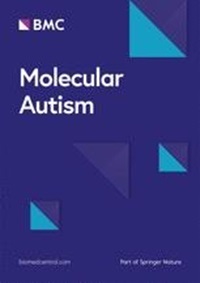Neuroligin-2 shapes individual slow waves during slow-wave sleep and the response to sleep deprivation in mice
IF 6.3
1区 医学
Q1 GENETICS & HEREDITY
引用次数: 0
Abstract
Sleep disturbances are a common comorbidity to most neurodevelopmental disorders and tend to worsen disease symptomatology. It is thus crucial to understand mechanisms underlying sleep disturbances to improve patients’ quality of life. Neuroligin-2 (NLGN2) is a synaptic adhesion protein regulating GABAergic transmission. It has been linked to autism spectrum disorders and schizophrenia in humans, and deregulations of its expression were shown to cause epileptic-like hypersynchronized cerebral activity in rodents. Importantly, the absence of Nlgn2 (knockout: KO) was previously shown to alter sleep-wake duration and quality in mice, notably increasing slow-wave sleep (SWS) delta activity (1–4 Hz) and altering its 24-h dynamics. This type of brain oscillation is involved in memory consolidation, and is also a marker of homeostatic sleep pressure. Sleep deprivation (SD) is notably known to impair cognition and the physiological response to sleep loss involves GABAergic transmission. Using electrocorticographic (ECoG) recordings, we here first aimed to verify how individual slow wave (SW; 0.5-4 Hz) density and properties (e.g., amplitude, slope, frequency) contribute to the higher SWS delta activity and altered 24-h dynamics observed in Nlgn2 KO mice. We further investigated the response of these animals to SD. Finally, we tested whether sleep loss affects the gene expression of Nlgn2 and related GABAergic transcripts in the cerebral cortex of wild-type mice using RNA sequencing. Our results show that Nlgn2 KO mice have both greater SW amplitude and density, and that SW density is the main property contributing to the altered 24-h dynamics. We also found the absence of Nlgn2 to accelerate paradoxical sleep recovery following SD, together with profound alterations in ECoG activity across vigilance states. Sleep loss, however, did not modify the 24-h distribution of the hypersynchronized ECoG events observed in these mice. Finally, RNA sequencing confirmed an overall decrease in cortical expression of Nlgn2 and related GABAergic transcripts following SD in wild-type mice. This work brings further insight into potential mechanisms of sleep duration and quality deregulation in neurodevelopmental disorders, notably involving NLGN2 and GABAergic neurotransmission.神经胶质蛋白-2塑造小鼠慢波睡眠期间的单个慢波以及对睡眠剥夺的反应
睡眠障碍是大多数神经发育障碍的常见合并症,往往会加重疾病症状。因此,了解睡眠障碍的内在机制对改善患者的生活质量至关重要。神经胶质蛋白-2(NLGN2)是一种调节 GABA 能传导的突触粘附蛋白。它与人类自闭症谱系障碍和精神分裂症有关,其表达的失调已被证明会导致啮齿类动物癫痫样超同步化脑活动。重要的是,Nlgn2的缺失(基因敲除:KO)先前已被证明会改变小鼠的睡眠-觉醒持续时间和质量,特别是会增加慢波睡眠(SWS)的δ活动(1-4赫兹)并改变其24小时的动态变化。这种类型的大脑振荡参与记忆巩固,同时也是平衡睡眠压力的标志。众所周知,睡眠不足(SD)会损害认知能力,而对睡眠不足的生理反应涉及 GABA 能传递。在此,我们首先利用皮层电图(ECoG)记录来验证 Nlgn2 KO 小鼠的慢波(SW;0.5-4 Hz)密度和特性(如振幅、斜率、频率)是如何导致较高的 SWS 三角活动和 24 小时动态变化的。我们进一步研究了这些动物对 SD 的反应。最后,我们使用 RNA 测序法检测了睡眠丧失是否会影响野生型小鼠大脑皮层中 Nlgn2 及相关 GABA 能转录物的基因表达。我们的结果表明,Nlgn2 KO小鼠的SW振幅和密度都更大,SW密度是导致24小时动态变化的主要特性。我们还发现,缺失 Nlgn2 会加速自毁性睡眠后的矛盾性睡眠恢复,同时在各种警觉状态下的心电图活动也会发生深刻变化。然而,失眠并没有改变在这些小鼠身上观察到的超同步心电图事件的 24 小时分布。最后,RNA 测序证实,野生型小鼠在自毁睡眠后,大脑皮层中 Nlgn2 和相关 GABA 能转录物的表达量总体下降。这项研究进一步揭示了神经发育障碍中睡眠时间和质量失调的潜在机制,特别是涉及NLGN2和GABA能神经传递的机制。
本文章由计算机程序翻译,如有差异,请以英文原文为准。
求助全文
约1分钟内获得全文
求助全文
来源期刊

Molecular Autism
GENETICS & HEREDITY-NEUROSCIENCES
CiteScore
12.10
自引率
1.60%
发文量
44
审稿时长
17 weeks
期刊介绍:
Molecular Autism is a peer-reviewed, open access journal that publishes high-quality basic, translational and clinical research that has relevance to the etiology, pathobiology, or treatment of autism and related neurodevelopmental conditions. Research that includes integration across levels is encouraged. Molecular Autism publishes empirical studies, reviews, and brief communications.
 求助内容:
求助内容: 应助结果提醒方式:
应助结果提醒方式:


